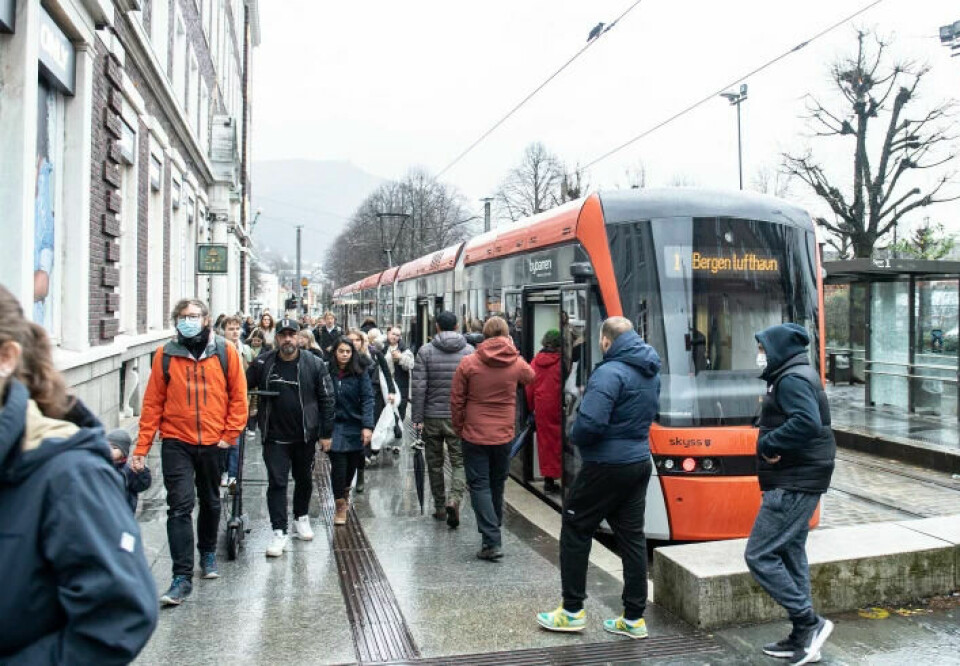
E-scooters steal passengers from public transport
“Public transport companies need a completely new strategy,” one researcher says.
Electric scooters, or e-scooters, are a climate-friendly and efficient way to get around the city. But they also have a somewhat bad reputation.
Research has shown that those who use them are often injured, park their e-scooters in the middle of the pavement, and are not as good at complying with traffic rules (link in Norwegian).
How do they impact the public transport service? Are they losing customers to e-scooters?
The answer is yes, according to a new study from the Institute of Transport Economics (TØI).
As many as 32 per cent of those who use e-scooters would have used a bus, tram or metro if the alternative did not exist.
This means that e-scooters have become a real competitor to public transport.
How does this impact the public transport service for those who do not use e-scooters? Will the buses run less frequently or visit fewer stops, and will the ongoing metro development stop?
Harms public transport services
“Of course e-scooters have negative consequences for the public transport service,” Christian Klöckner, a researcher at NTNU, says.
He also emphasises that this also affects walking and cycling.
The new study shows that 45 per cent of those who use e-scooters say they would have walked if no e-scooters were available. And six per cent would have cycled.
Electric bicycles, on the other hand, only pose a small challenge to public transport, according to Klöckner.
The pandemic however, has hit public transport hard.
“The bigger threat is people’s changed mobility habits after the pandemic, where public transport is the main loser,” he says.
“This can have major consequences when public transport companies are unable to maintain the current services, which in turn has a reinforcing effect on reducing the number of passengers.”

Public transport out of date
How will people move around in cities in the future? Is it okay if buses and trams ‘expire’?
“Although e-scooters have some negative effects, they are part of a more differentiated urban mobility,” Klöcker explains.
He believes that electric micromobility, i.e., e-scooters, electric bicycles, electric mopeds etc., will play a greater role in cities in the future.
The challenge for companies such as Ruter in Oslo and Skyss in Bergen will then be to offer services that cover people's travel needs but in a new context.
“This requires creativity from the public transport companies,” says Klöcker.
He tells of a company in England that asked its customers specifically on each route what they wanted, what they liked, and what they did not like.
They then introduced completely different concepts depending on the needs: a bus line with a built-in library and a seating area for meetings, and another with super comfortable seats and the opportunity to eat and drink.
E-scooters are also important
It's not just the case that e-scooters cause trouble in traffic. They also help make traveling in the city easier.
The study from TØI shows that e-scooters meet a real transportation need.
Over 40 per cent of those who use e-scooters use them to and from school and work. 31 per cent use them for errands and leisure activities.
The proportion who used an e-scooter for fun, about five per cent, is less than in previous surveys.
Additionally, the trips by e-scooter are short: four out of five trips last less than 15 minutes.
———
Translated by Alette Bjordal Gjellesvik.
Read the Norwegian version of this article on forskning.no
Reference:
Fearnley, Karlsen and Bjørnskau ‘E-scooters in Norway: Main results from two web-surveys autumn 2021’. TØI report, May 2022. Summary.
































